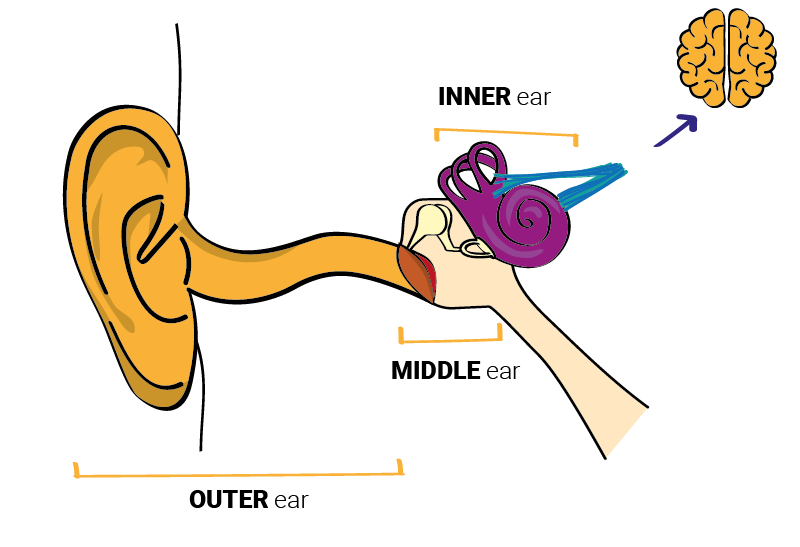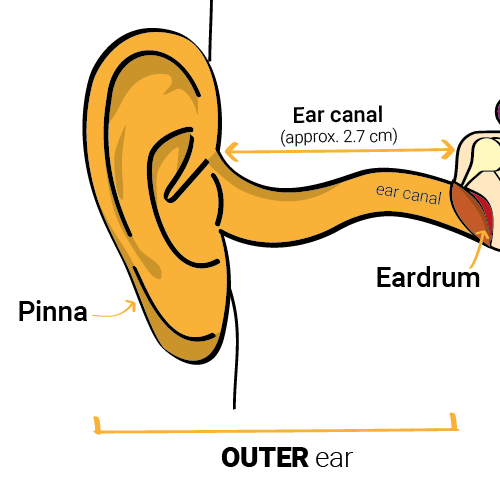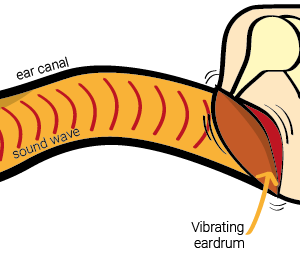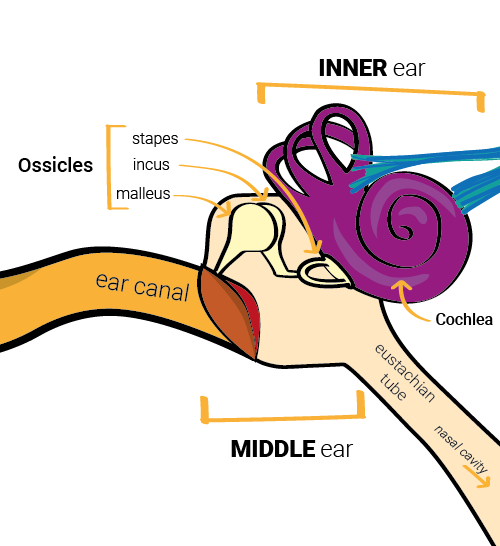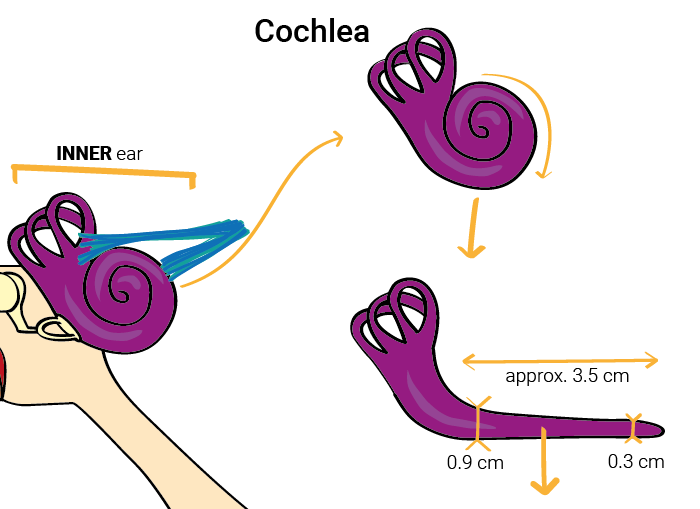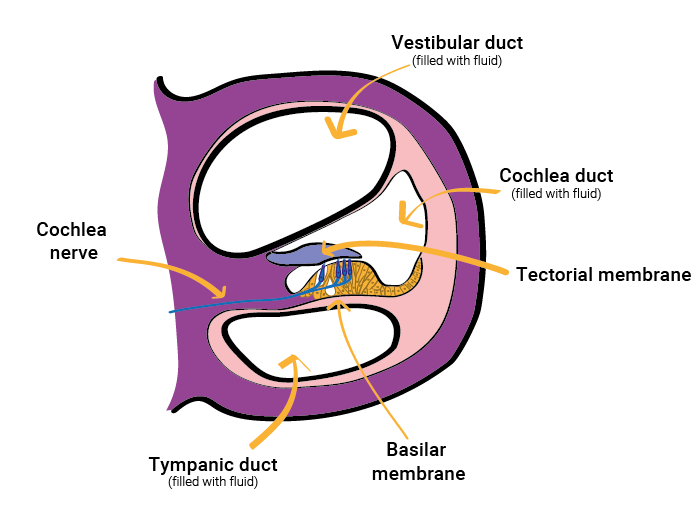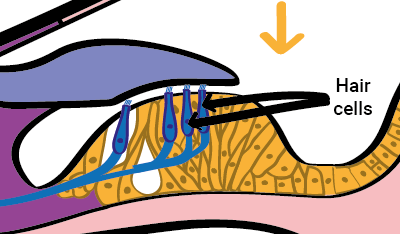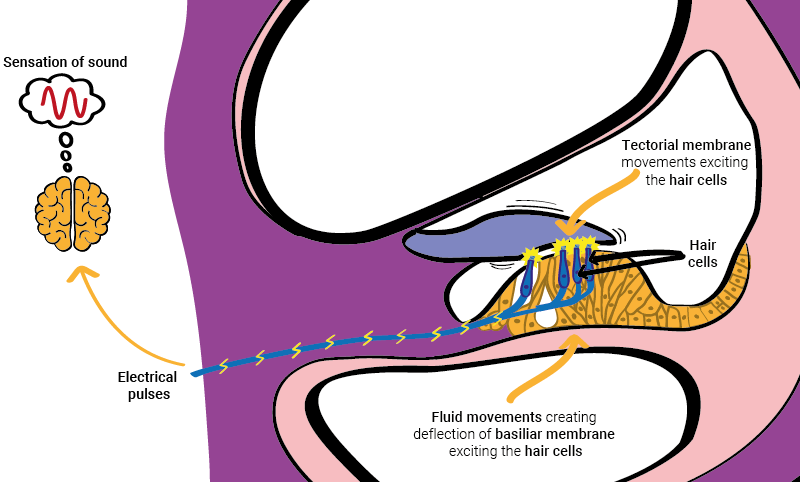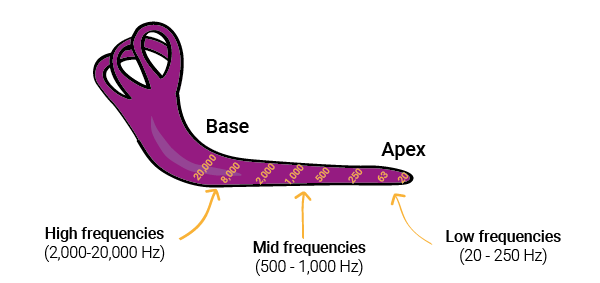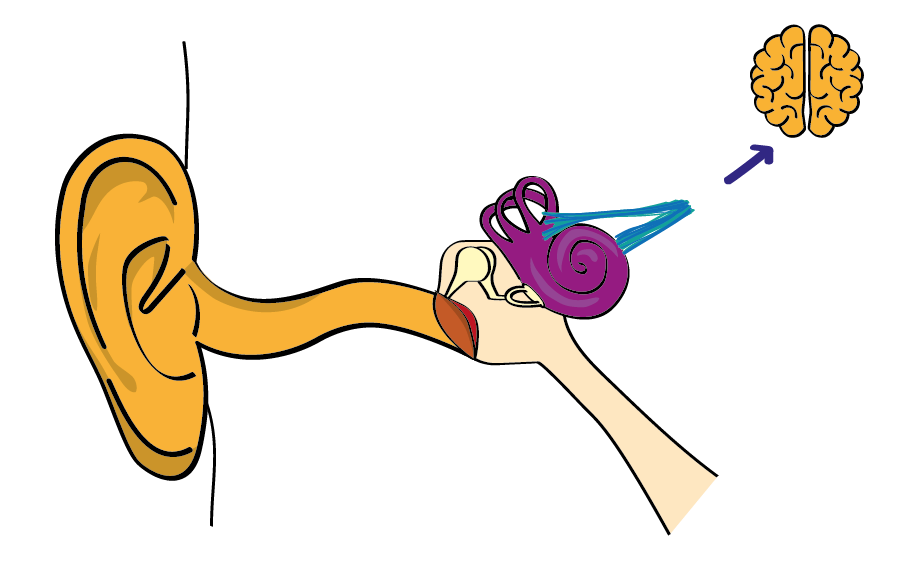
The auditory system, or hearing system, is a complex part of our body that enables us to hear sounds.
In this article, we explore how this system works by explaining the role of:
- the outer ear
- the middle ear
- the inner ear.
Enjoy the read!
(See at the end the references used to confirm the concepts)

Do you want to be notified when new posts are published?
Why don’t you subscribe to Atelier Crescendo’s newsletter by clicking here?
What is the auditory system ?
The auditory system helps us hear the world around us.
It’s an important part of how we communicate, learn, and enjoy life.
Whether it’s music, conversations or other sounds, our auditory system picks up sound and makes sense of it.
The auditory system consists of three main parts:
- the outer ear.
- the middle ear.
- and the inner ear.
Each part plays a crucial role in how we hear.
The role of the outer ear
Note
Interestingly, the ear canal acts like a resonance chamber, which means it naturally amplifies frequencies around 3,000 Hz by up to 10 dB.
This explains why we are more sensitive to sounds near this frequency, more exactly in the range of 2,000 to 5000 Hz.
(if you want to better understand the concept of frequencies, read this article)
The role of the middle ear
Behind the eardrum is the middle ear, which contains three tiny bones called the ossicles :
- the hammer (also called the malleus)
- the anvil (also called the incus)
- and stirrup (also called the stapes)
They work together to transfer and amplify the vibrations from the eardrum to the inner ear.
The stirrup (or stapes) is the bone connected to the cochlea, in the inner ear.
The role of the inner ear
The inner ear contains a spiral-shaped part called the cochlea, which is filled with fluid.
It is approximately 3.5 cm long, the base has a 0.9 cm diameter and the end has a 0.3 cm diameter.
The cochlea is lined with thousands of tiny hair-like cells … called the hair cells (!!).
When the vibrations reach the cochlea, they create waves in the fluid.
These waves bend the hair cells. And as the cells bend, they turn the vibrations into electrical signals that are sent to be brain by the cochlea nerve.
High-pitched sounds make the hair cells at the base of the cochlea vibrate, while low-pitched sounds affect cells at the tip.
Loudness depends on the amplitude of the waves. Stronger waves bend the hair cells more, creating stronger electrical signals.
When the signals reach the brain, the brain processes them and tells us what we hear.
It figures out whether the type of sound. This process happens in a split second, so you can hear and understand sounds almost instantly!
Acoustic references
See below the references used to confirm the above concepts:
- Architectural Acoustics – Second Edition – Marshall Long – Academic Press
- Noise Control in Building Services – Sound Research Laboratories (SRL) Ltd – Pergamon Press
- Sense of Hearing – Chapter: Anatomy and Physiology for Health Professionals: Special Senses (https://www.pharmacy180.com/article/sense-of-hearing-3587/)

